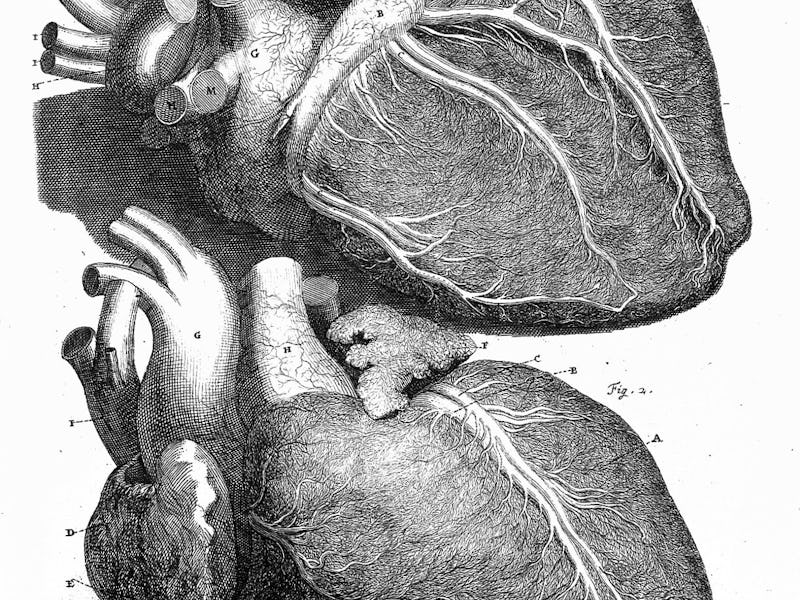Scientists Grew a Beating Heart From Scratch
Stem cells just need a little bit of coaxing.

Using nothing but stem cells, scientists have successfully grown a fully functioning human heart in a lab. It’s pretty tiny — a “microheart”, as the research team at UC Berkeley calls it — but it beats just the same. This sort of thing has been attempted with stem cells before, but this is the first time it’s been done without the help of 3D printers or artificial structures, like scaffolding for a building, to keep the cells in place. The scientists, who just published their results in Nature Communications used a special chemical trick that forced cells to organize in the right configurations — doing away with the need for those external scaffolds. Growing other organs in the same way might get a whole lot easier.
To build a heart from scratch, you start with stem cells. These are “undifferentiated” cells that haven’t yet decided what they’re going to be when they grow up: heart cells, skin cells, brain cells, etc. Every cell in our bodies starts out as a stem cell, then goes through a series of changes that decide its fate. Scientists have figured out how to reverse that process, undoing the changes that made, say, a liver cell, and returning it to its original state, giving it the chance to go through its life differently. (If only it were that easy.)
The Berkeley team, headed by Zhen Ma, took these stem cells (in this case, former skin cells) and coaxed them to become heart cells using heart-specific growth factors. This kind of thing has been done before to make mini-organs ranging from brains to kidneys to breasts, but these models weren’t as precisely formed as the Berkeley mini-heart, which actually has chambers that allow it to beat. To coax the cells to self-organize into these structures, they grew the cells in dishes painted with growth factors in specific patterns. Depending on where it was on the dish, the stem cells would grow up to become either the cells that make up heart connective tissue or cardiac muscle cells. This happens naturally when embryos grow in the womb, but this is the first time it’s been induced in an in vitro setting.
The researchers hope their micro-hearts can be used to study heart development in a human model — currently, most researchers are confined to studies in rats. It’ll also be useful for figuring out how drugs used in pregnancy will affect a growing heart, as they showed in their paper, which looked at the effects of thalidomide on their models. But, looking further, they hope their method of coaxing stem cells to organize into specific structures could be used to grow models of any other organ imaginable.